Lorenza Bacino takes a tour of this seaside town and the surrounding province, and discovers pretty villages, abbeys, churches, museums, and plenty of wonderful places to eat
Photos by Lorenza Bacino unless otherwise stated
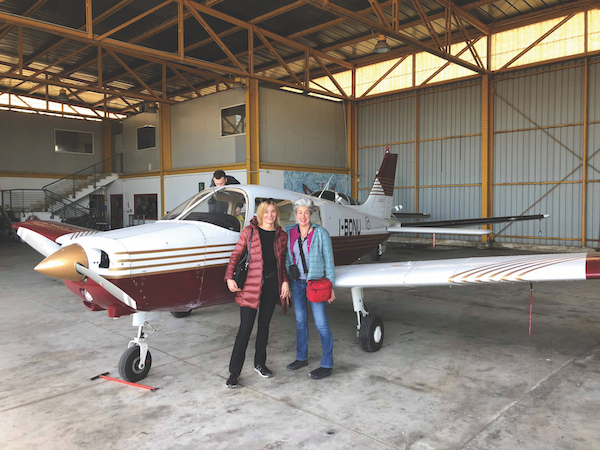
1. The view from above
For the more adventurous, a scenic tour of the coastline and mountains from above could be just the introduction. A brief security check at the airport with our charming and youthful trainee pilot, and we were off. A teeny, four-seater plane was dragged out of the hangar and before I knew it there was no turning back. It felt like being in an ancient, rickety 2CV car as we trundled along the runway, slowly gathering speed before ascending noisily into the clouds. My hands were clammy and my face an interesting hue of green; all the while my companions happily snapped away and took videos. It is really exhilarating, though, and a great way to enjoy the coastline and mountains, but if you suffer from any form of motion sickness, take a pill and be prepared to feel every bump, every gust of wind and every twist and turn.
Aeroclub Pescara (+39 085 431 3451)
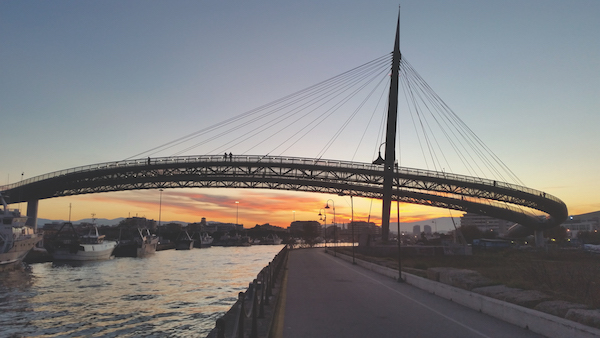
2. Exploring the city on foot or by bike
This modern and vibrant seaside hub gets super-busy in summer and is popular with Italian families. Easy to explore on foot or by bike, it also boasts one of the biggest marinas on the Adriatic coast, where 1,250 boats can be moored. The town itself was heavily bombed during WWII and was rebuilt from the rubble. Nevertheless, part of the old town remains – Pescara Vecchia, with its Museo delle Genti d’Abruzzo and the birthplace of Gabriele D’Annunzio, one of the greatest Italian literary figures of the 20th century. Both museums are found along the same street.
Pescara is ideal for families as swathes of the new town are closed to traffic and there’s a lively restaurant, café and shopping scene. Architecturally, there are two flamboyant bridges to look out for – the Ponte del Mare and the Ponte Flaiano – and along the seafront there’s the modern white Carrara marble Fontana Nave (boat fountain) sculpture by artist Pietro Cascella.
3. Museo delle Genti D’Abruzzo
An anthropological journey through 4,000 years of regional history in the heart of Pescara Vecchia (Old Pescara), this remarkable collection of artefacts housed in 15 display rooms makes for an interesting visit for children, too. It traces the story of human habitation in the area from prehistoric times to the modern day. Learn about religious and ceremonial traditions, see how olive oil was produced, how grain was farmed and how fishermen survived a harsh life. The museum was built within the walls of the town’s 16th-century fortress, and the Bourbon prisons are still visible on the ground floor – a place where many a young 19th-century revolutionary fighting for the unification of Italy was chained and tortured. Post-unification (1860), the prison was closed and many important documents pertaining to the Risorgimento and Italian Unification are on display, including uniforms worn by the National Guard, the Tricolour flag and newly minted coins for a unified country. Ask to be shown round and you’ll find the curators extremely knowledgeable and helpful. Entry €6.
Museo delle Genti D’Abruzzo
Via delle Caserme, 24 – Pescara (+39 085 451 0026)
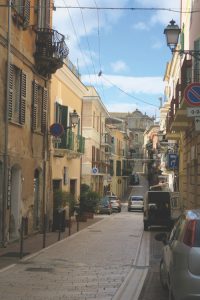
4. Città Sant’Angelo
Perched 325 metres above sea level, surrounded by olive groves, and vineyards producing delicious Montepulciano d’Abruzzo wine, this picturesque town was awarded sixth place for quality of life by Forbes magazine. Its rich architectural heritage includes the main Collegiate church of San Michele Arcangelo with its ornate Baroque interior and beautiful frescoes. A life-size 14th century statue of San Michele shows him dressed as a fighting soldier killing a symbolic dragon. Construction began in the 9th century and the church underwent many changes and additions up until the 18th. The exterior is notable for its grand 47-metre bell tower and long 15th-century porticos overlooking the piazza.
5. A feminist saint and a prehistoric elephant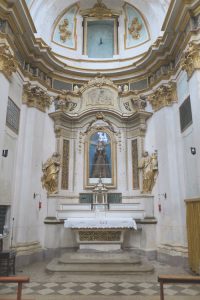
Built in the shape of an equilateral triangle, the elegant church of Santa Chiara in Città Sant’Angelo is a fine example of Franciscan architecture and houses a wealth of beautifully ornate Baroque decorations nestled in three deep alcoves. The statue of Santa Chiara commands your attention, with St Francis on her right and St Cecilia on her left. Chiara is known as a ‘feminist’ saint as she founded a female-only religious order at a time when women had no choices at all. Adjacent to the church is the Ruota degli Esposti, a cylindrical, turning mechanism fashioned out of wood and onto which unwanted babies were abandoned for the nuns to collect.
Another curiosity lies in the Museo Civico (the former San Salvatore church) in the form of a prehistoric elephant’s trunk unearthed during work to build a motorway in 1977. It’s undergone extensive restoration and is housed in a protective glass tank. It is believed to be up to 125,000 years old.
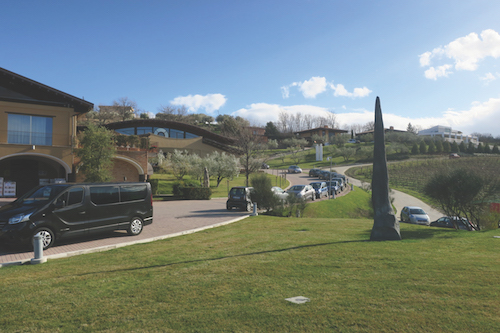
6. Cantina Zaccagnini and their Montepulciano d’Abruzzo
This gorgeous winery in the small town of Bolognano was founded in 1978. It’s a family business which has expanded both in reputation as well as in dimension, and now encompasses 300 hectares. Seventy per cent of Zaccagnini’s annual wine production of three million bottles is exported to 45 countries across five continents. Book a guided tour of the vineyards and enjoy copious cold cuts and local cheese and wine with a group of friends. (San Clemente Montepulciano d’Abruzzo is particularly delicious.) Enjoy a tour of the cellars and see the works of art and installations adorning the walls and alcoves. The philosophy ‘Wine, the art of man’ certainly encapsulates the mood here and Zaccagnini are known for their support of artistic events and their search for harmony between productivity, art and environment. The entire structure of the building resembles the wing of a gull, and the wine barrel storage has its eye-line across the Majella National Park as if keeping watch over the surrounding land.
Azienda Agricola Ciccio Zaccagnini
Contrada da Pozzo, Bolognano (+39 085 888 0195)

7. An amazing fresco
A remarkable 15th-century encaustic fresco fills the entire rear wall of the Chiesa Santa Maria in Piano at Loreto Aprutino. Entitled Giudizio (Judgement), it’s one of the most important frescoes in central Italy. The encaustic method used to create the vibrant colours involved using heated beeswax and adding colour to the mixture, only reheating it at the time of painting. The colours remain bright to this day. The scene depicts Purgatory, with its Ponte del Capello, a thin bridge over which dead souls must cross to prove they are worthy to enter Paradise. If they fail, they tumble into the swirling river. San Michele symbolically weighs souls on scales and those who are deemed suitable gain entry into Paradise, portrayed as a tower on three levels with St Peter at the door. The artist is affectionately known as the Maestro di Loreto, but his identity is in fact unknown.
www.comune.loretoaprutino.pe.it
8. The region’s famous ceramics
Ceramics and pottery are everywhere in Abruzzo, including in Pescara’s Antiche Maioliche di Castelli at the Museo Villa Urania in the centre of town. In Loreto, there’s a precious and splendid collection of Castelli ceramics at the Acerbo museum. The more than 600 exhibits date from the 15th to the 19th century and form the most comprehensive collection in the region. It was owned by Baron Giacomo Acerbo, who began collecting in the 1930s and subsequently bequeathed it to the town.
Museo Acerbo
Via Giacomo Acerbo, 1 – Loreto Aprutino (+39 085 829 1589)
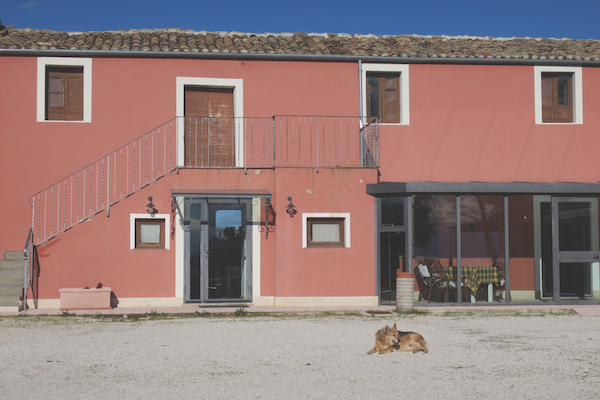
9. The local olive oil
Loreto Aprutino is also known as the Città dell’Olio (City of Oil) and there’s an interesting Museo dell’Olio in the town. You can learn about all the different phases of olive oil production and see the old presses, machinery and other utensils involved – from ancient times to modern day. It’s a beautiful setting with vaulted ceilings and atmospheric lighting and is built within the walls of an olive oil mill from the 1880s. Use the same ticket to visit the Ceramics museum.
Le Masserie Due Colline agriturismo (above) offers an olive oil tasting session with producer Giuseppe Beghella, where he’ll explain the different types and flavours and help you understand which type of olive oil should accompany which dishes. The flavours are sipped in tiny shot glasses and delicious grassy and sometimes peppery flavours hit the back of the throat. A cookery lesson with Franca is great fun and you’ll make traditional egg pasta that you can eat and enjoy afterwards. Rooms are €30 per person and kids under 15 are half price. Pool and football area available and tours of the area can be organised.
Museo dell’Olio
Via Cesare Battisti, 65014 Loreto Aprutino (+39 085 829 1589)
Le Masserie Due Colline
Località Cipressi, 65013 Città Sant’Angelo (+39 085 969 0415)
10. A visit to San Clemente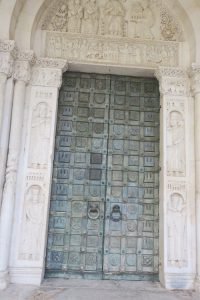
An aura of calm descends upon entry to the wonderful San Clemente Abbey, the largest Benedictine church in Abruzzo and a very fine example of Romanesque-Gothic architecture, adored by Pescara’s beloved poet Gabriele D’Annunzio (1863-1938).
The imposing white structure was built in AD 871 by the Emperor Ludovico II and contains the relics of St Clement, the Pope. Gorgeous, white, and empty due to repeated pillaging and robbery, a 9th-century crypt is all that remains of the original abbey. Examine the fantastically detailed floral carvings on the pulpit, the mythical figures on the archways around the doorways and on the external façade, where you can see carved in stone the story of the church’s construction. The giant bronze door from 1191 has 72 rectangular panels depicting crosses, rose patterns, 14 castles and two door knockers in the shape of a lion’s head. The adjacent museum houses artefacts salvaged from the church.
Contrada San Clemente, 65020 Castiglione a Casauria (+39 085 888 5162)
Lorenza’s trip was organised the Camera di Commercio, Pescara.
Click here for our Pescara travel guide.
